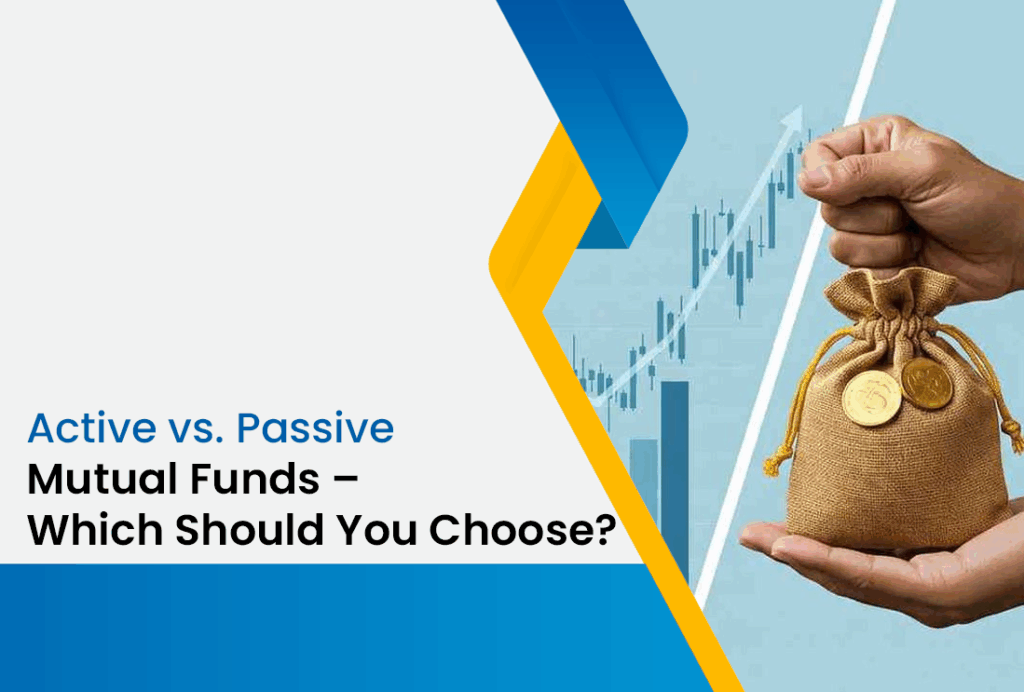People who carry dreams of financial growth often face a turning point where they must select between active mutual funds and passive mutual funds and the moment of choice can feel heavy because each direction carries separate reasoning, unique emotions and very different financial outcomes. When a person starts building wealth, the first thoughts usually move toward safety, gradual growth and steady reliability and this decision grows in meaning since one method offers the guidance of professionals who study numbers and events while the other simply follows a chosen index without any interference or personal judgment.
What Are Active Mutual Funds?
Active mutual funds are controlled by professional managers who spend many hours reading company reports, comparing performance figures, studying economic conditions and watching signals from markets while making decisions that may bring results above a set index. This approach depends on knowledge, time and effort and managers attempt to change study into actions that hold the possibility of stronger returns, while also accepting the uncertainty that comes with every decision in unpredictable conditions.
Such funds can bring rewards when the managers’ decisions match market directions and during those times investors feel confident with the hope of earning more than usual, yet the process brings heavier costs because management requires research teams, long study and constant involvement, so expenses remain higher compared with other choices and smaller investors often feel the fees eat into their savings. Markets carry surprises and no one can control sudden events, so even the most skilled professional can face results that do not meet expectations and this makes the experience of active funds a mixture of trust, doubt, hope and worry.
What Are Passive Mutual Funds?
Passive mutual funds follow another direction because they copy the exact structure of an index, holding the same companies in the same proportion without applying judgment or change which makes them simple for investors who do not want constant research or daily analysis. Since there is no heavy management, the costs remain lighter and the performance usually stays close to the index itself and many people feel comfort in the steady results that come without added expense or complex explanation.
Yet the calm feeling carries its own limit, because passive funds never rise beyond the index they follow and the growth remains restricted to whatever the index delivers, so some investors begin to wonder whether chances of higher returns are being left aside. For certain people, that limitation feels acceptable because peace and predictability bring quiet sleep, while others may feel restless thinking about the opportunities that were never touched and so emotions differ based on what each person values more deeply.
Comparing the Two Approaches
When both forms of investing are placed side by side, the differences appear clear because active funds rely on the constant skill and judgment of managers, while passive funds follow the index structure without personal decisions. Active funds may deliver higher growth at times but bring heavier expenses, while passive funds carry lighter costs and steadier outcomes but remain limited to the level of the index.
The experience of risk also separates them, since active funds can move sharply upward or downward depending on decisions taken, while passive funds reflect only the same movement of the index itself without sudden personal influence and this difference changes how people feel. Some enjoy the possibility of quick gains even if it means sudden drops, while others feel secure when returns move quietly with the broader market and the meaning of safety changes depending on individual preference and emotional comfort.
Which one should you choose ?
The decision connects directly with personal goals, tolerance for change and comfort with uncertainty, because some people feel safe trusting professionals who manage their money with constant judgment, while others prefer the calm knowledge that their funds simply follow the index without any surprise from personal decisions.
Someone with a long horizon who can accept unpredictable results may find excitement in active funds where the chance of higher returns exists, while another person who prefers stability and lower costs may lean toward passive funds and both choices hold sense because no single path fits every type of investor. Every person carries unique aims, habits and emotional patterns and the selection depends more on personal character than on fixed rules written in books.
Why Many Investors Combine Both
Many careful investors do not choose one side alone and instead they combine both forms, building a balance where active funds bring the hope of greater returns and passive funds provide steadiness with lower expenses. The mixture helps reduce fear of missing growth while also avoiding the stress of sudden drops and the combination makes the plan feel more complete and more human.
When people reflect with care on their goals, their comfort with risk and the time they are willing to wait, the question between active and passive funds stops feeling like a battle. It becomes a way of balancing two different forces, one offering ambition and the other offering calm and the harmony of both can create a stronger journey toward financial growth with emotional peace.
Final Thought
Seed FinServe continues guiding investors with steady advice that connects financial choices with personal goals and every suggestion carries meaning because it is shaped with care to reflect both practical needs and emotional comfort. When a person receives direction that combines money with life dreams, each decision becomes more than a transaction since it turns into a step that holds confidence, calmness and a sense of reassurance that daily effort will not be wasted.
The path of wealth slowly changes shape when guidance helps people trust their own plan, because money stops being seen only as numbers or figures and begins to stand as reliability, stability and quiet strength during uncertain times, while also acting as support for families and comfort in daily living. Such meaning creates peace that goes beyond market results, since financial growth also provides freedom from fear and the ability to look toward future stages without constant worry.
Wealth then becomes something larger than savings because it carries safety for the present, hope for the future and confidence across years and through thoughtful guidance it transforms into a companion that continues to support life not just today but also tomorrow and through every season that follows.

